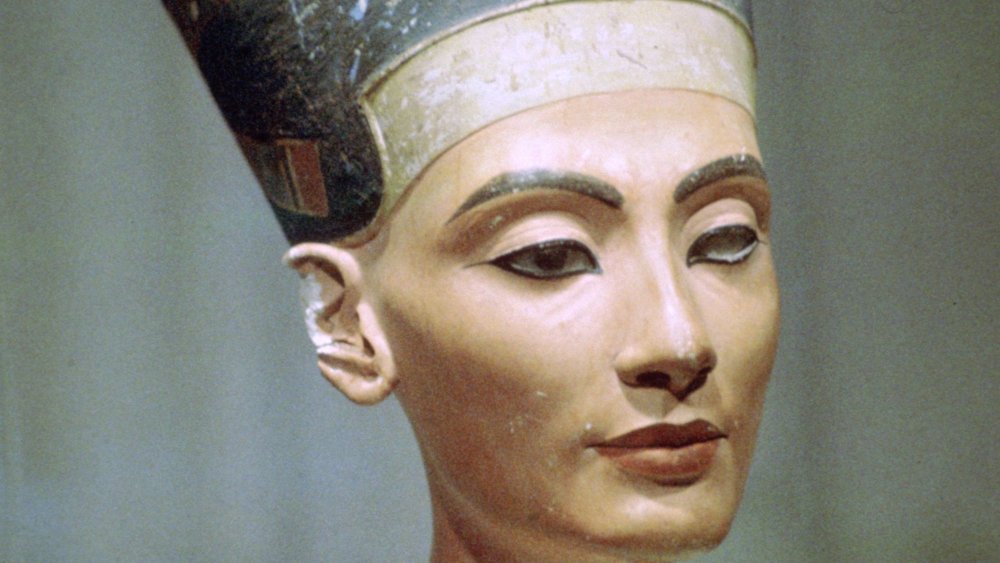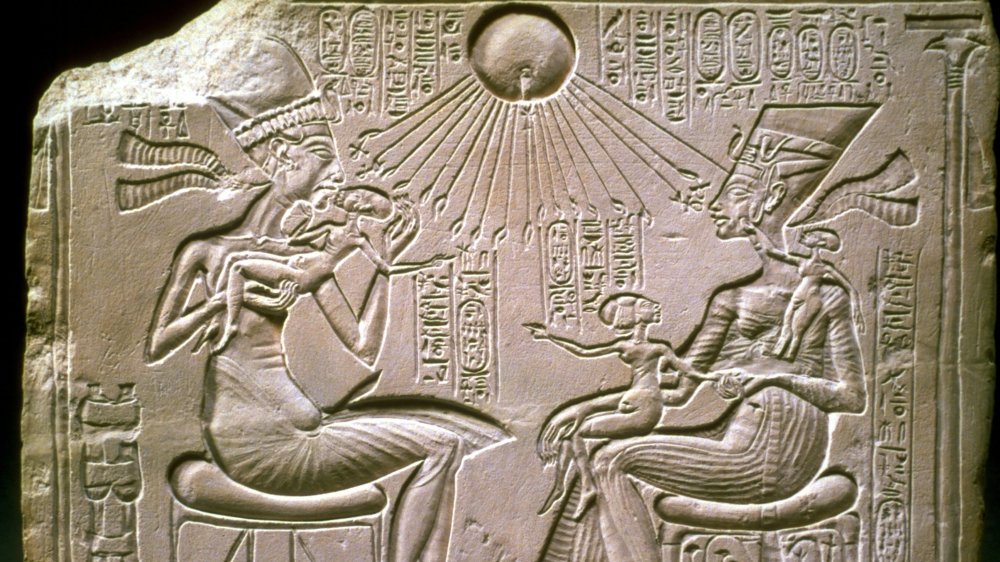The Mysterious Truth About Queen Nefertiti
The most famous Egyptian queen is Cleopatra (though she is technically more of a Pharoah), but probably second is Nefertiti. People recognize her name immediately, but many don't know her actual history. One of the more fascinating things about Nefertiti is the mystery of what happened to her. According to the Ancient History Encyclopedia, Nefertiti disappeared from historical records despite her years as one of Egypt's most important women.
Nefertiti was the wife of King Akhenaten, who ruled from 1353 to 1336 BCE. After Akhenaten died, she may have ruled on her own. Her reign and that of her husband were times of great change, explained History. Akhenaten believed in a different religion and forced his subjects to change their religious devotions, too. He worshiped the god Aten, rather than the chief deity Amon (and other gods), so he changed his name from Amenhotep to Akhenaten. He also moved the palace to a new city. By most accounts, Akhenaten respected his wife tremendously — he ordered her image to be placed on his official seal, indicating he thought of her as his equal. But by the 14th year of their reign, around the time of her daughter's death, Nefertiti disappeared from history. And to this day, her burial site is still unknown.
Nefertiti might have changed her name
Theories abound as to why Nefertiti is scrubbed from records. The Ancient History Encyclopedia said it's possible that Nefertiti failed to provide a male heir, so a new favored consort replaced her. Perhaps she abandoned the new religion and was banished. She might have committed suicide after her daughter died, or changed her name to Smenkhkare to rule until her stepson, Tutankhamun (yes, King Tut), came into power.
Since Akhenaten already had a male heir in Tutankhamun, Nerftiti was unlikely to be erased from history for not giving him a son. But because Tutankhamun was young, and only took the throne when he was eight or nine, Nefertiti may have felt she needed to reign in his place. The more plausible answer is that people simply wanted to forget the years of religious experiment represented by Akhenaten and Nefertiti. Tutankhamun began dismantling his father's reforms, and subsequent pharaohs began destroying their temples. Any mention of Nefertiti would've disappeared, too.
Archaeologists, however, think they can find more clues about Nefertiti by looking through Tutankhamun's tomb. The Guardian reported that scans of King Tut's tomb showed a possible secret chamber where the queen could be buried. Historians argued her image is suggested in some of the crypt's murals. But hopes were dashed in 2018, when authorities concluded that no hidden rooms exist within the tomb, wrote NPR. And so the mystery of Nefertiti continues.

